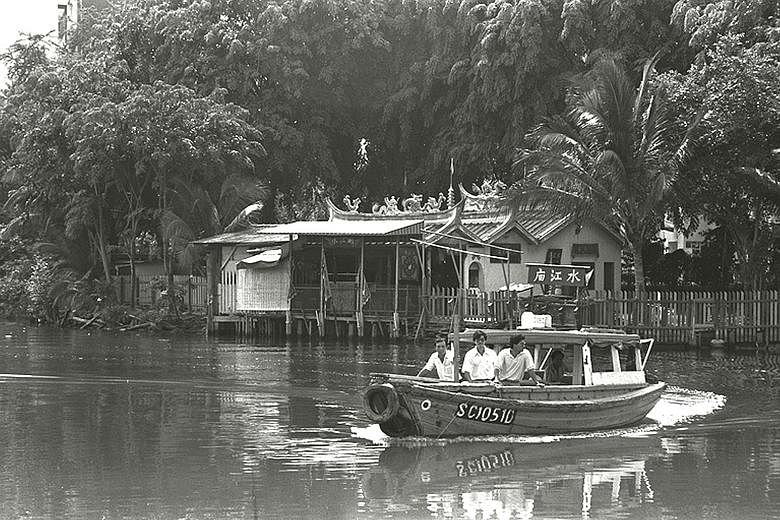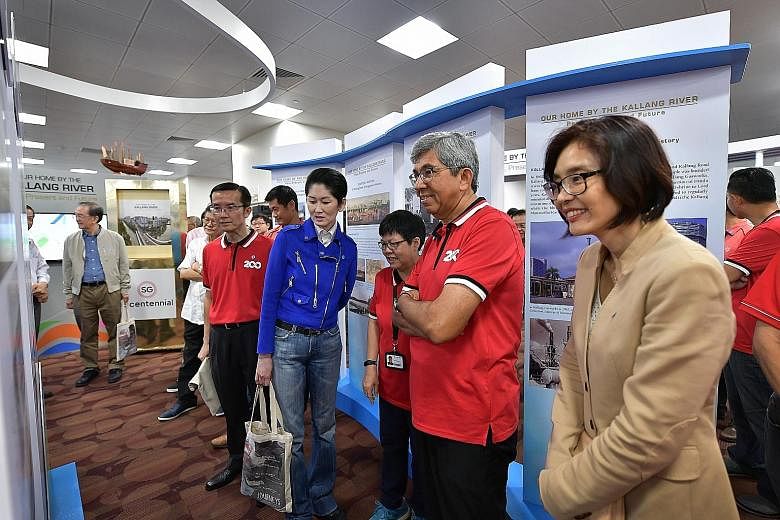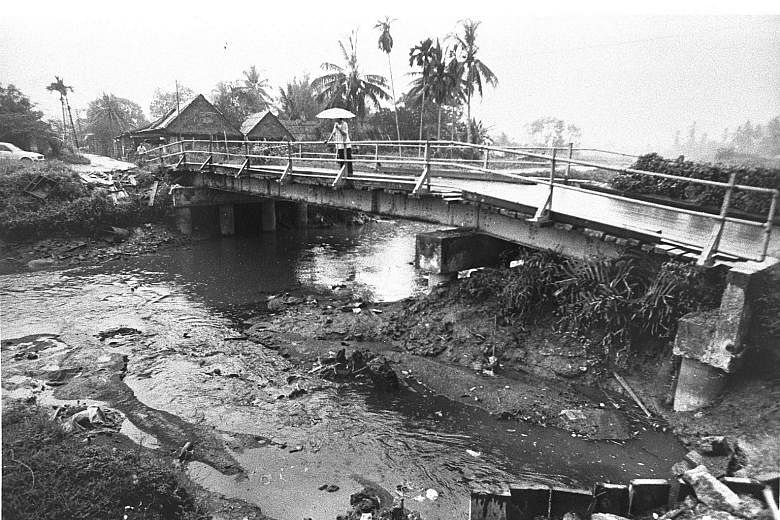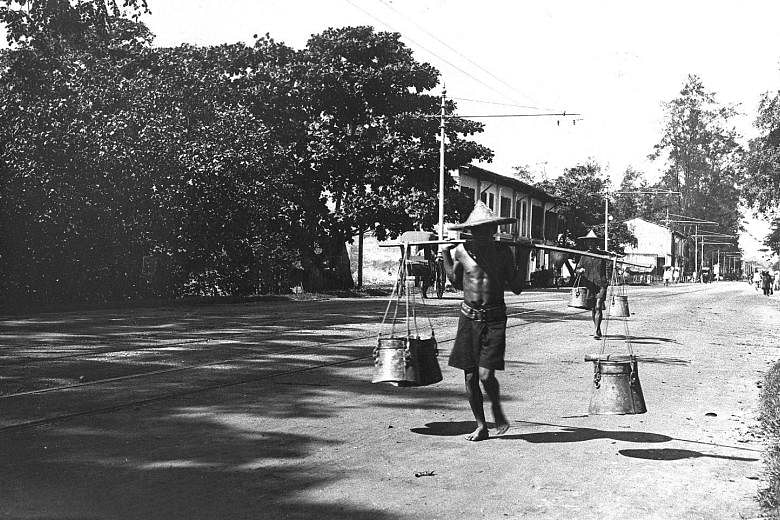The Kallang River is now seen as just another water source but for many years it served as a swimming hole, playground and community club for those lucky enough to live in the surrounding area.
For Mr Chin Fook Siang, 77, the river most reminds him of an idyllic childhood surrounded by friends.
Mr Chin is among those who lived along the Kallang River to be featured in a book called Our Home By The Kallang River - Past, Present And Future that was launched yesterday at the National Library.
It is published by the Kolam Ayer Citizens' Consultative Committee, in conjunction with Singapore's bicentennial year.
Dr Yaacob Ibrahim, MP for Jalan Besar GRC, said at the launch gathering: "What is more suited for the (bicentennial celebration) other than the river that cuts across many constituencies, many estates, and most importantly, has been around for the last 700 years with a very rich history.
"It is important for all of us to remember not to reminisce about the past but to see what we can use to move forward.
"The river is a microcosm of Singapore... you can find temples, shrines, new buildings and old structures all built around it."
Dr Yaacob, who is also grassroots adviser to Kolam Ayer Grassroots Organisations, added that recreational spaces along the river will allow people to come together and build social ties.
An exhibition was also opened at the library featuring key points in the river's history, including the discovery in the 1970s of blue and white porcelain shards dating back to the Ming Dynasty.
The remarkable find confirmed that trading took place here as early as the 17th century.
The Kallang River was named after a subsidiary group of the Orang Laut, one of the earliest documented inhabitants in Singapore. The Orang Biduanda Kallang lived on boats in the swamps along the Kallang Basin as early as the 1500s.
In the 1970s and 1980s, the heavily polluted river was cleaned up.
Mr Chin, who was at the launch, said: "I always think of how my mother told us not to swim there but we would do it all the time. It used to be cleaner but when more houses were built and people moved over, it got dirtier.
"It also reminds me of everyone sitting outside their houses and chatting in the early evenings when it was too hot to be indoors. We were always together beside the river and that was the true kampung spirit."
Mr Chin lived in the Sims Drive area near the Mun San Fook Tuck Chee Temple for almost four decades. He is now the temple chairman and the vice-chairman of the Taoist Federation (Singapore).
Others at the launch also reminisced about the river as a site of entertainment, community and even romance.
Retired civil servant Lee Eng Khong, 66, said: "I could look out of my window (in the Geylang area) and see the sampans and cargo boats in the river.
"I also saw couples dating and rowing together. Sometimes, the boyfriend would row the girl home. It was very romantic."
He and his family lived by the river for about 12 years before moving out when reclamation work began at the Kallang Basin.
Former MP Andy Gan, 71, recalled visiting circuses erecting their tents near the river, and walking the elephants through the village to bathe in the river.
"I would roam there. It was my source of recreation and my playground where I would catch fighting fish," he said.
"Shaw Brothers (film producers) also filmed scenes at the river and we would excitedly watch them."





